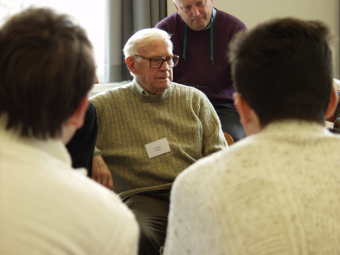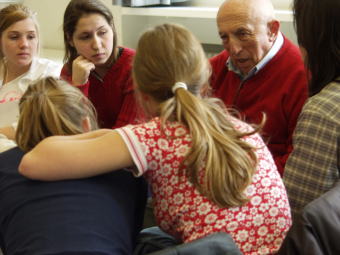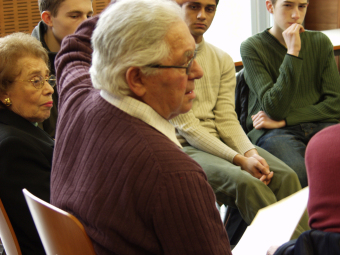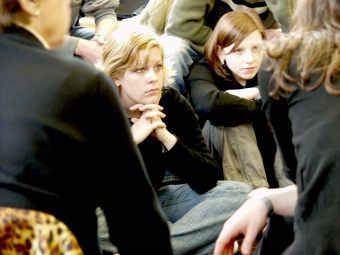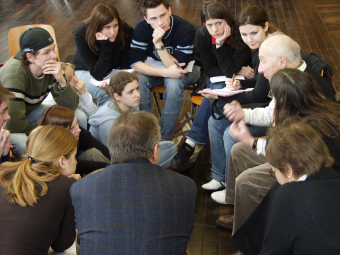Conversations with School Students during the 2004 Survivors’ Meeting
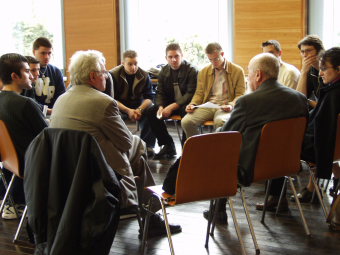
© Eva & Artur Holling
“It, it’s something you don’t take off when you change your prisoner’s, when you change your clothing. It, it’s really a burden, and also an injury, for certain, not only for the present generation, but also for the other generations. The [survivors] often tell us that their children, and grandchildren too, have been damaged by it.”
(Adam König, conversation with school students, March 23, 2004, Frankfurt am Main)
In the context of the survivors’ meeting in 2004, 33 survivors of the Buna/Monowitz concentration camp spoke to a total of 450 school students on two days, talking about their imprisonment in the camp, their lives, and the controversy over compensation. Volunteer moderators had visited the classes ahead of time, during a class hour, to prepare them for the conversation and provided them with introductory information about the history of the Buna/Monowitz concentration camp and I.G. Farben.
For many of the guests, the contact with young people and the opportunity to bear witness to their period of suffering, the Holocaust, in front of such an audience was a major component of the survivors’ meeting. Most of the contemporary witnesses had previously held conversations, particularly with school classes, in their hometowns, and some had published their memoirs in book form: Passing on their experiences and making the “Never again!” appeal has always been an important concern for them. For the students, in turn, the 90-minute encounter with a survivor during the conversations was, first, a chance to hear eyewitness reports on the conditions in National Socialist concentration camps and thus get a better idea of the persecution of the European Jews. Second, meeting a person who endured such an unimaginable fate was an extraordinary experience for the young people.
The narrative styles of the individual survivors were quite diverse: While some gave a prepared talk as an introduction or read a text aloud, others waited for the audience to ask questions. One survivor showed a short film about his experience that had been made for television in the United States. Some men who were long-time friends told their story jointly, and sometimes the wife was present during the conversation. Some decided quite spontaneously to tell their stories for only the first or second times in their life.
Since 2004, some of the interlocutors have passed away, and the Norbert Wollheim Memorial was created in their memory, too. The presentation of video interviews on this web page stems from our desire to make the individual stories of life and survival and of the controversy over compensation for injustice and suffering available over the long term as well.
(SP/GK; transl. KL)



















